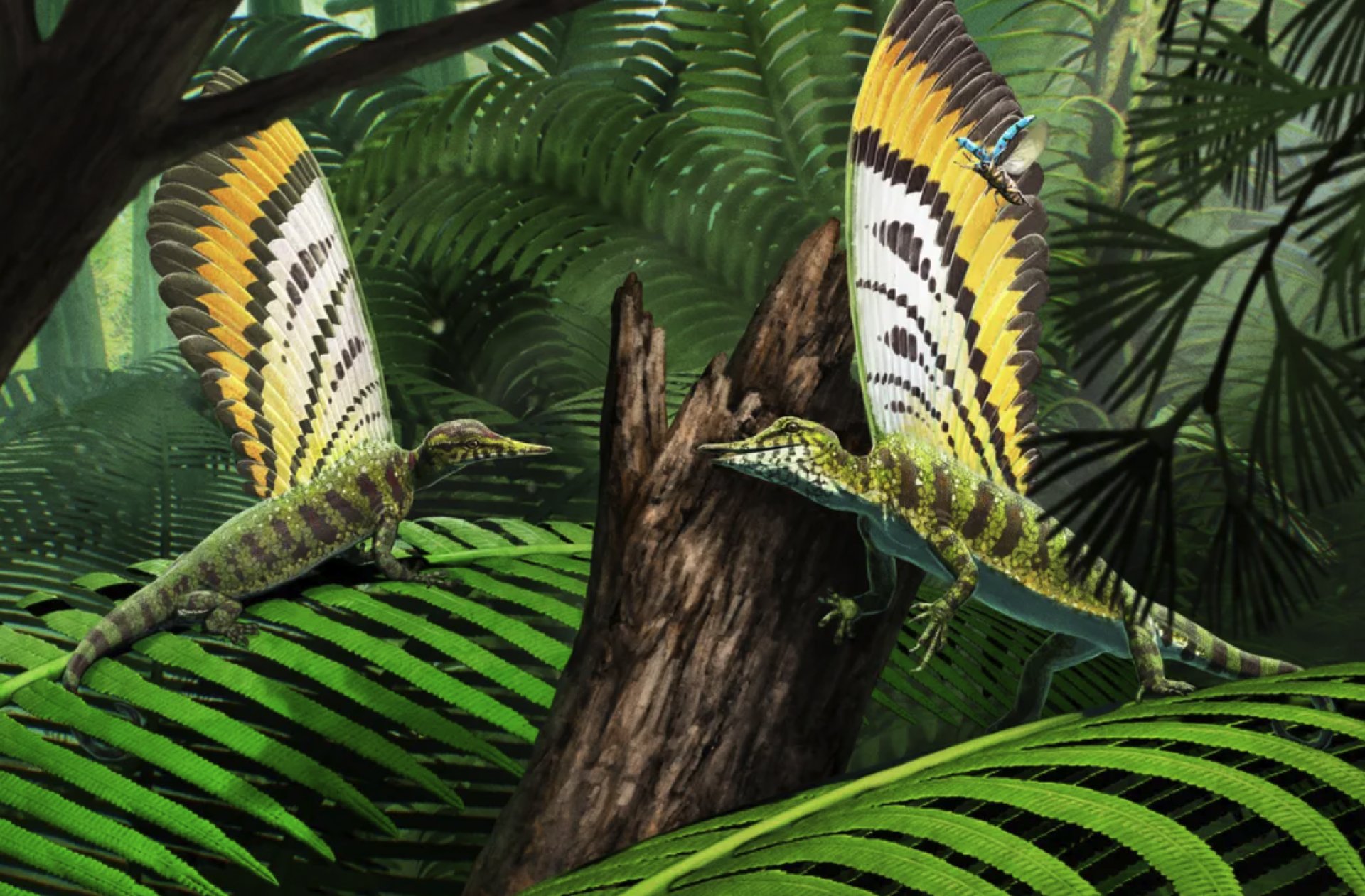A recent study published in the journal Nature has revealed new insights about the ancient reptile known as Mirasaura grauvogeli, which lived approximately 247 million years ago. Researchers from the Stuttgart State Museum of Natural History in Germany examined a fossil originally discovered in 1939, leading to significant discoveries about this long-extinct creature’s unique physical features and possible communication methods.
The defining characteristic of Mirasaura is a feather-like structure extending from its back. While previous interpretations suggested these appendages were feathers, the new research indicates they were actually a distinct type of skin that resembled a fan. This fan-like structure may have played a role in communication among the reptiles, according to the study’s findings. The appendages contained pigment-carrying particles known as melanosomes, which are typically associated with birds rather than reptiles.
Insights into the Drepanosaur Family
The research team also delved into the evolutionary connections between Mirasaura and its close relative, Longisquama insignis. Both species exhibited similar elongated structures, but previous fossil records had left paleontologists puzzled. The team was able to reconstruct the skeletal anatomy of these creatures, suggesting that they belonged to the drepanosaur family, a peculiar group of reptiles from the Triassic era (ranging from 201 million to 252 million years ago).
Drepanosaurs, sometimes referred to as “monkey lizards,” are characterized by their unusual features, including long, bird-like skulls and chameleon-like bodies. The study proposes that these reptiles may have had elaborate, helical structures extending from their backs, similar to those observed in Mirasaura and Longisquama.
Richard Prum, an evolutionary biologist at Yale University, commented on the study, stating, “This evidence reveals that vertebrate skin has evolutionary possibilities that are weirder than might be easily imagined.” He emphasized that the findings suggest a broader range of evolutionary adaptations among reptiles than previously understood.
Advancements in Paleontological Research
The study marks a significant advancement in paleontological methods, utilizing technology that allows researchers to probe softer materials such as skin and scales found in fossils. The meticulous analysis of the Mirasaura fossil has provided a deeper understanding of the physical characteristics of ancient reptiles, helping scientists piece together their evolutionary history.
As paleontologists continue to examine and reinterpret older fossils, discoveries like these unveil fascinating insights into the past. The ability to identify and understand the complexities of ancient life forms reinforces the importance of ongoing research in the field. Each new finding not only enhances our knowledge of the history of life on Earth but also highlights the intriguing adaptations that have emerged over millions of years.
In summary, the research on Mirasaura grauvogeli opens up new avenues for understanding the evolutionary mechanisms that shaped the diverse forms of life during the Triassic period. As scientists refine their techniques and revisit past discoveries, the potential for groundbreaking revelations about ancient organisms remains vast.







































































